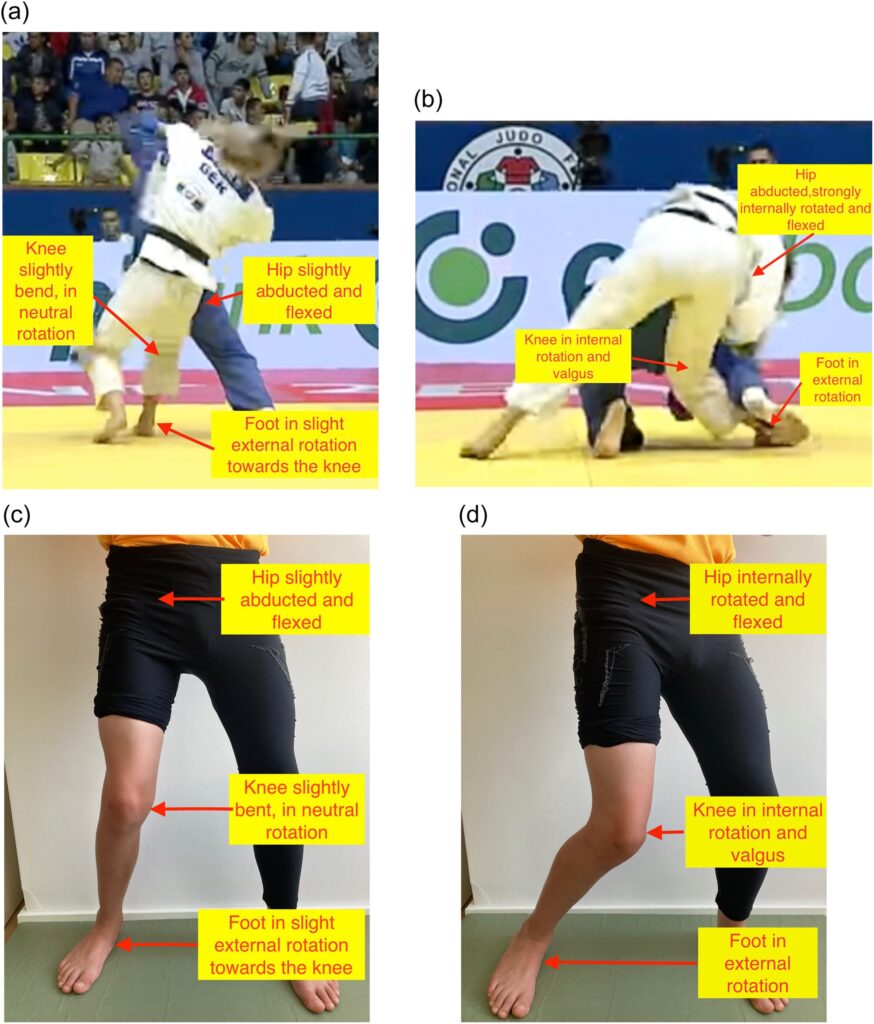Injury mechanism of anterior cruciate ligament ruptures in judo
Akoto R, Mehl J, Diermeyer T, Achtnich A, Petersen W, Lambert C. Direct contact and very rapid valgus distortion characterise the injury mechanism of anterior cruciate ligament ruptures in judo. Knee Surg Sports Traumatol Arthrosc. 2024 May 30.

ABSTRACT
PURPOSE: To analyse anterior cruciate ligament (ACL) rupture (ACLR) injury mechanisms in competitive judo using systematic video analysis, focusing on contact situations and biomechanics.
METHODS: Seventeen videos of judo competitions wherein athletes developed ACLRs were included and retrospectively evaluated by five analysts. In all videos, the moment of initial contact and the index frame were defined. The judo techniques leading to the injury; the occurrence of direct contact, indirect contact or noncontact mechanisms; the time interval between the initial contact and index frame; the positions of the hip, knee and foot in relation to the initial contact and index frame; and the balance status during the initial contact and index frame were recorded.
RESULTS: Eleven (65%) of ACLRs in judo involved direct contact. The mean time interval between initial contact and index frame was 15 ± 22 ms. Thirteen (77%) athletes were not balanced at initial contact. In the index frame, the hip was abducted in all cases and in combination with internal rotation in 12 (71%) cases. From initial contact to index frame, hip flexion increased in all cases; at index frame, the knee joint was internally rotated relative to the trunk in 12 (71%) cases, and the knee flexion angles increased from the initial contact. In the index frame, the foot was externally rotated relative to the knee in 12 (71%) cases, and severe valgus development of the knee with valgus collapse was observed in 14 (82%) cases.
CONCLUSIONS: A direct attack on the knee was the most common injury mechanism observed. Valgus distortion appears to be the most important component of the mechanism of injury. With this knowledge, ‘modified defence reactions’ for specific judo techniques can be developed to reduce the injury risk.

Download the full article HERE.
All our previous articles about knee injury in judo HERE.

